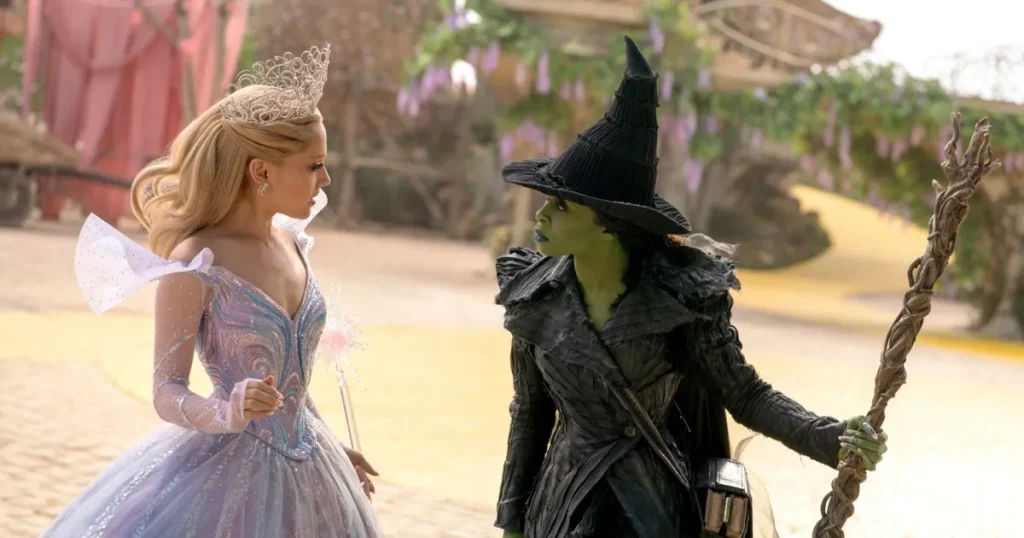The Enduring Tale of Friendship: Wicked: For Good Brings the Beloved Story to a Close
In the much-anticipated conclusion to the Wicked saga, Wicked: For Good delivers a poignant finale to the extraordinary friendship between Elphaba and Glinda. Released on November 21, the second installment picks up where its predecessor left off – with Cynthia Erivo’s Elphaba exiled from Oz after uncovering the Wizard’s fraudulent nature. While largely following the second act of the Broadway musical, the film enriches the narrative with new scenes and additional solos for both Erivo and Ariana Grande, who portrays Glinda with remarkable depth. The movie presents a complex moral landscape where Elphaba is publicly maligned as the Wicked Witch of the West, while Glinda finds herself reluctantly complicit in the deception orchestrated by Madame Morrible (Michelle Yeoh) and the Wizard (Jeff Goldblum). This internal conflict drives much of the emotional tension throughout the film, forcing both women to reckon with their values and loyalties in a world increasingly divided by lies.
The heart of Wicked: For Good lies in its exploration of friendship amid seemingly insurmountable differences. After spending most of the film at odds, Glinda experiences a profound awakening, recognizing that she stands on the wrong side of history. In one of the film’s most moving sequences, she resolves to help Elphaba despite the personal risk. Their reunion across a dividing wall becomes a testament to the enduring power of their bond, culminating in heartfelt declarations of love before they must part ways again. The arrival of Dorothy (Bethany Weaver), who appears to kill Elphaba by dousing her with water, creates a moment of devastating grief for Glinda. What the people of Oz don’t realize – but the audience is privileged to know – is that Elphaba survives through a secret passage revealed to her by Jonathan Bailey’s Fiyero. This narrative sleight-of-hand beautifully subverts the traditional villain story we thought we knew from The Wizard of Oz, reframing Elphaba’s supposed demise as an act of liberation rather than defeat.
The revelation of Elphaba’s parentage provides one of the film’s most surprising emotional punches. When Glinda presents the Wizard with the green potion bottle that once belonged to Elphaba’s mother, the realization dawns on him that he is her biological father. This revelation fundamentally alters our understanding of the antagonism between these characters and adds layers of tragic irony to their earlier interactions. The Wizard’s subsequent departure from Oz leaves a power vacuum that Glinda fills with determined grace, immediately asserting her authority by arresting Madame Morrible. This transition of power represents not just a political shift but a moral one – Oz moving from deception toward truth, from oppression toward justice. Meanwhile, Elphaba and Fiyero (now transformed into the Scarecrow) choose exile over recognition, escaping Oz together while allowing the myth of the Wicked Witch’s death to persist.
The film’s conclusion masterfully intertwines the personal and political outcomes of the characters’ journeys. Glinda remains in Oz, committing herself to rebuilding a more just society for all citizens – a tremendous responsibility that reflects her growth from the self-centered character we first met. Her announcement to the town that the Wicked Witch is dead creates a perfect narrative circle, returning us to the opening scene of the first film but with our perspective completely transformed. We now understand the layers of emotion and sacrifice beneath Glinda’s public face, adding poignant depth to her celebratory words. Meanwhile, Elphaba and Fiyero find personal freedom at the cost of exile, choosing love and truth over reputation and homeland. Their escape represents both loss and liberation – the painful necessity of leaving behind the familiar to embrace an uncertain but authentic future together.
The emotional resonance of Wicked: For Good reaches its zenith in its final moments. As Elphaba gazes back toward Oz, her thoughts inevitably turn to Glinda, while simultaneously, Glinda looks forward with Elphaba in her heart. This mirrored longing beautifully captures the enduring connection between two women whose paths diverged but whose spirits remain intertwined. The film’s closing scene – a flashback showing Glinda whispering into Elphaba’s ear in a sunlit field – serves as both an homage to the iconic Broadway poster and a perfect encapsulation of their intimate bond. This visual callback reminds audiences of the theatrical origins that inspired the film while suggesting that some secrets between friends remain just that – private treasures shared between two hearts. Unlike many modern blockbusters, Wicked: For Good opts against a post-credits scene, allowing the emotional impact of its conclusion to resonate uninterrupted.
While the Broadway musical consists of only two acts, leaving no immediate source material for continuation, director Jon M. Chu has expressed openness to the possibility of a third film. More intriguingly, composer Stephen Schwartz and screenwriter Winnie Holzman have hinted at discussions regarding another project set in this universe, though they emphasize it would not be “Wicked part three or four.” This tantalizing suggestion speaks to the rich storytelling potential of Oz and its inhabitants beyond the central narrative we’ve now seen concluded. Whatever form this mysterious new project might take, it’s clear that the world created in these films has captured both creators’ and audiences’ imaginations, promising that while Elphaba and Glinda’s story may have reached its natural conclusion, the magic of Oz still has secrets to reveal. For now, Wicked: For Good stands as a satisfying and emotionally resonant finale that honors the complex friendship at the heart of this beloved tale – a friendship that challenged both women to become their better selves and, in doing so, changed their world for good.


